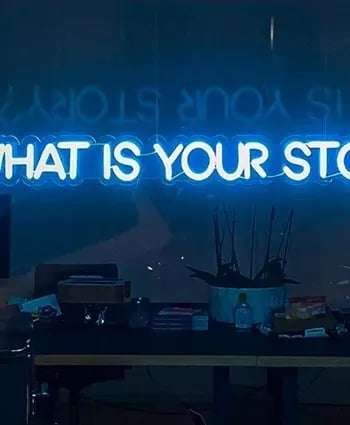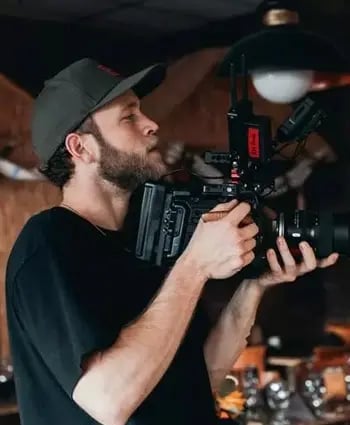Video and Animation Production: A Complete Beginner’s Guide
A complete beginner’s guide to the video and animation production process, including tips on working with an animated video production company from start to finish.
You’ve seen brands use video to tell stories, explain products, and build trust—but how do they do it? If you’re curious about what goes into making a professional video or wondering where to start, you’re not alone. Whether it's your first time or you're considering a new approach, understanding the basics of video and animation production can help you move forward with confidence.
From early planning to final delivery, this guide breaks down the process so you know exactly what to expect.
WHAT IS VIDEO AND ANIMATION PRODUCTION?
Video production refers to the process of filming real people, products, or scenes using cameras and lights—ideal for interviews, promos, or behind-the-scenes content. Animation production, by contrast, is entirely digital, allowing brands to visualise abstract ideas, walk through processes, or tell stories without needing to shoot on location.
If your business is dealing with complex products or hard-to-film services, partnering with an animated video production company can be a game-changer. It gives you complete visual control and helps turn tricky concepts into clear, engaging narratives.
STEP 1: DISCOVERY AND STRATEGY
Every great video starts with a goal. What’s the story you want to tell? Who’s your audience? What’s the action you want them to take after watching?
The discovery phase lays the foundation for the entire project. Whether you're opting for live-action or animation, this is when you clarify objectives, align messaging, and decide the right creative approach for your brand and audience.
STEP 2: SCRIPTWRITING AND CONCEPT DEVELOPMENT
Once strategy is locked in, the focus turns to storytelling. The script is the heartbeat of your video—it guides visuals, pacing, tone, and length. For animation, this includes scripting voiceovers and defining key scenes. For live-action, it may also involve shot planning or interview questions.
A well-crafted script saves time later. It ensures that the creative team—and you—know exactly what’s being said and shown at every moment.
STEP 3: STORYBOARDING AND VISUAL PLANNING
This is where you start to see your ideas take shape. In animation, storyboards outline each scene visually so you can preview the flow. In live-action, it’s more about preparing shot lists, identifying props, and confirming locations.
This stage aligns everyone creatively. It prevents scope creep, ensures clarity, and keeps production moving smoothly from concept to creation.
STEP 4: PRODUCTION BEGINS
For live-action, this is filming day. Cameras roll, lights are set, and the energy on set is buzzing. For animation, this is when the design team creates assets, begins animating scenes, and integrates voiceovers and music.
It’s one of the most exciting phases, as your project shifts from idea to reality—whether through pixels or footage.
STEP 5: POST-PRODUCTION AND POLISH
Now the editing begins. Live-action content is cut, colour-graded, and synced with sound. Animated content is refined frame by frame, ensuring every movement and transition feels natural and smooth.
This is where music, voiceovers, subtitles, and branding are layered in. It’s also the stage where your video transforms from rough draft to final masterpiece.
STEP 6: REVIEW AND FEEDBACK LOOPS
Most production teams offer 1–2 rounds of feedback, giving you the chance to fine-tune. Whether it’s changing a graphic, adjusting the music, or tweaking the pacing, this stage ensures the final version ticks every box.
Clear communication during this phase helps avoid delays—and keeps everyone happy with the outcome.
STEP 7: LAUNCH AND DISTRIBUTION
With your video complete, it’s time to share it with the world. This means publishing it across your website, social media, email campaigns, and paid channels. A good partner will optimise your video for different platforms, aspect ratios, and audience behaviours.
Videos don’t live in a vacuum—they’re part of a broader strategy. Launching with a plan ensures your content gets the visibility (and impact) it deserves.
STEP 8: MEASURING PERFORMANCE
Once your video is live, tracking how it performs is essential. Are viewers sticking around? Are they clicking the CTA? Did the video increase conversions?
These metrics help you assess ROI and inform your future content decisions. If you’re working with an experienced team, they’ll often help you define what success looks like before the project even begins.
HOW TO CHOOSE THE RIGHT PARTNER
Whether you’re leaning towards filming or working with an animated video production company, picking the right partner is crucial. You want a team that listens, brings creative ideas, and aligns with your goals—not just a vendor to tick a box.
Ask about their process, experience in your industry, and ability to adapt to your brand voice. A great production partner won’t just produce content—they’ll help you create videos that move the needle.
BRING YOUR VISION TO LIFE—WITH A LITTLE HELP
You don’t need to know all the technical stuff—that’s what we’re here for. What you do need is an idea, a goal, and a team who knows how to turn that into a video worth watching.
If you're ready to kick off your journey with a team that takes care of the strategy and the storytelling, let us build your bespoke quote today—we’ll handle the rest.
Written by James Bryant Video strategist and co-founder for Venture Videos — a full-service video production agency that specialises in producing creative videos & campaigns that get real results.




